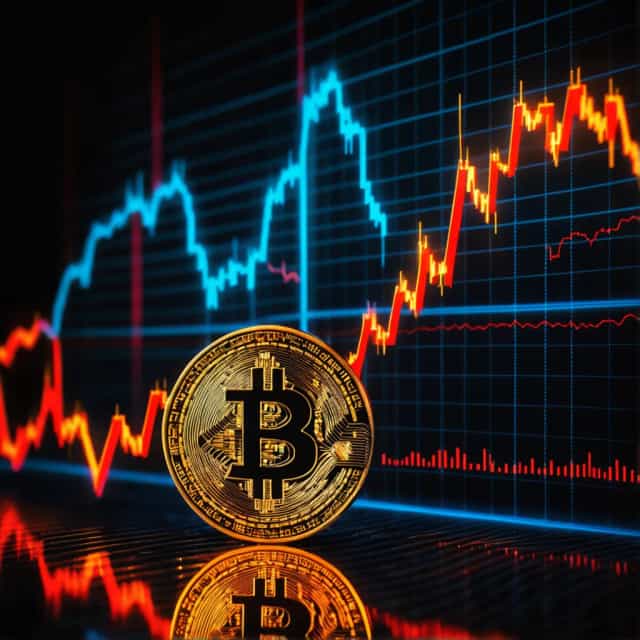
Image source: Block Media
Gold’s Long-Term Bull Market: A Historic Journey with Future Potential
Gold continues to shine as a cornerstone of global investment, with its current long-term bull market demonstrating substantial growth. Analysts are now drawing parallels between today’s trajectory and prior historic cycles, emphasizing that while the ongoing rally has surpassed the gains of the early 2000s, it remains modest compared to the explosive surge witnessed in the 1970s. This comparison suggests that gold may still have significant upside potential in the medium and long term.
Recent insights from 3Fourteen Research, published on October 21, delve into gold’s price behavior across three major long-term bull cycles since the collapse of the Bretton Woods system in 1971. The current cycle has built notable momentum but is yet to rival the unprecedented heights achieved during the 1970s.
Gold’s Historic Bull Market Phases
Gold's journey has been marked by three monumental bull market cycles, each shaped by unique macroeconomic and geopolitical factors.
1. The 1970s: Gold’s Breakthrough Decade
The first major bull cycle for gold, spanning 1971 to 1980, was ignited by the collapse of the Bretton Woods system. President Richard Nixon’s decision to end the U.S. dollar’s convertibility to gold marked a seismic shift, severing the dollar-gold link and ushering gold into an era of free-market trading. This pivotal event coincided with soaring inflation driven by two major oil shocks, which sent real interest rates into negative territory.
As inflationary pressures intensified globally, gold emerged as a premier store of value and hedge against economic instability. During this period, gold prices skyrocketed, reaching an index equivalent of 26,000—suggesting a theoretical price of over $20,000 per ounce. Geopolitical turbulence further reinforced gold’s allure, making it a robust asset class in uncertain times.
2. The 2000s: A Bull Market Fueled by Financial System Instability
The second significant bull market unfolded between 1999 and 2011 and followed a different path, shaped by the fallout from the dot-com bubble collapse and the subsequent Federal Reserve policies. Prolonged low interest rates, coupled with quantitative easing during the 2008 Global Financial Crisis, severely weakened investor confidence in traditional financial institutions.
As trust in fiat currencies and the established financial system waned, gold became an increasingly attractive alternative for both institutional and retail investors. Simultaneously, rising demand for the precious metal from emerging markets, especially India and China, contributed to its price boom. Gold surged to $1,900 per ounce during this cycle, with the gold index peaking at over 8,600—equivalent to $9,000 per ounce.
The Current Bull Cycle: Long-Term Growth Dynamics
The ongoing bull market began in 2018 and has already surpassed 2,600 days, marking a noteworthy duration. As of October 2025, gold’s index has reached approximately 4,200. While the ascent during this cycle has been steeper than that seen in the early 2000s, it lacks the rapid, almost vertical price movements characteristic of the 1970s surge. This slower, steadier growth suggests that the current cycle may still have ample room for further gains.
Experts are optimistic about long-term prospects for gold. Warren Pies, founder of 3Fourteen Research, noted, “The current gold bull market is outperforming the 2000s trajectory, and these long-term cycles tend to rise higher and persist longer than investors typically anticipate.” Key macroeconomic drivers, including geopolitical instability and inflationary pressures in key global markets, are solidifying gold’s position as an unparalleled hedge against uncertainty.
Future Outlook: Gold’s Strategic Role in Financial Planning
The analysis underscores how gold continues to thrive in prolonged economic uncertainty. Historically, gold has stood as both a hedge against inflation and a reliable store of value during volatile market conditions. Today, with ongoing geopolitical tensions, central bank interventions, and economic instability across the globe, gold retains its appeal for diverse investor classes—ranging from large institutions to individual buyers.
While the current bull cycle’s ascent has been more measured compared to the explosive growth of the 1970s, this very characteristic affords it potential longevity. Long-term market cycles often defy expectations, rising higher and enduring longer than many investors plan for, according to 3Fourteen Research.
For investors and analysts alike, the enduring lesson is clear: gold remains a resilient and essential asset within a diversified portfolio. As historical patterns suggest, the long-term outlook remains bullish, with growing evidence that gold could see further appreciation in the coming years. With its status as a hedge against looming economic risks solidified, gold’s trajectory in this ongoing cycle underscores its enduring importance to global financial markets.










